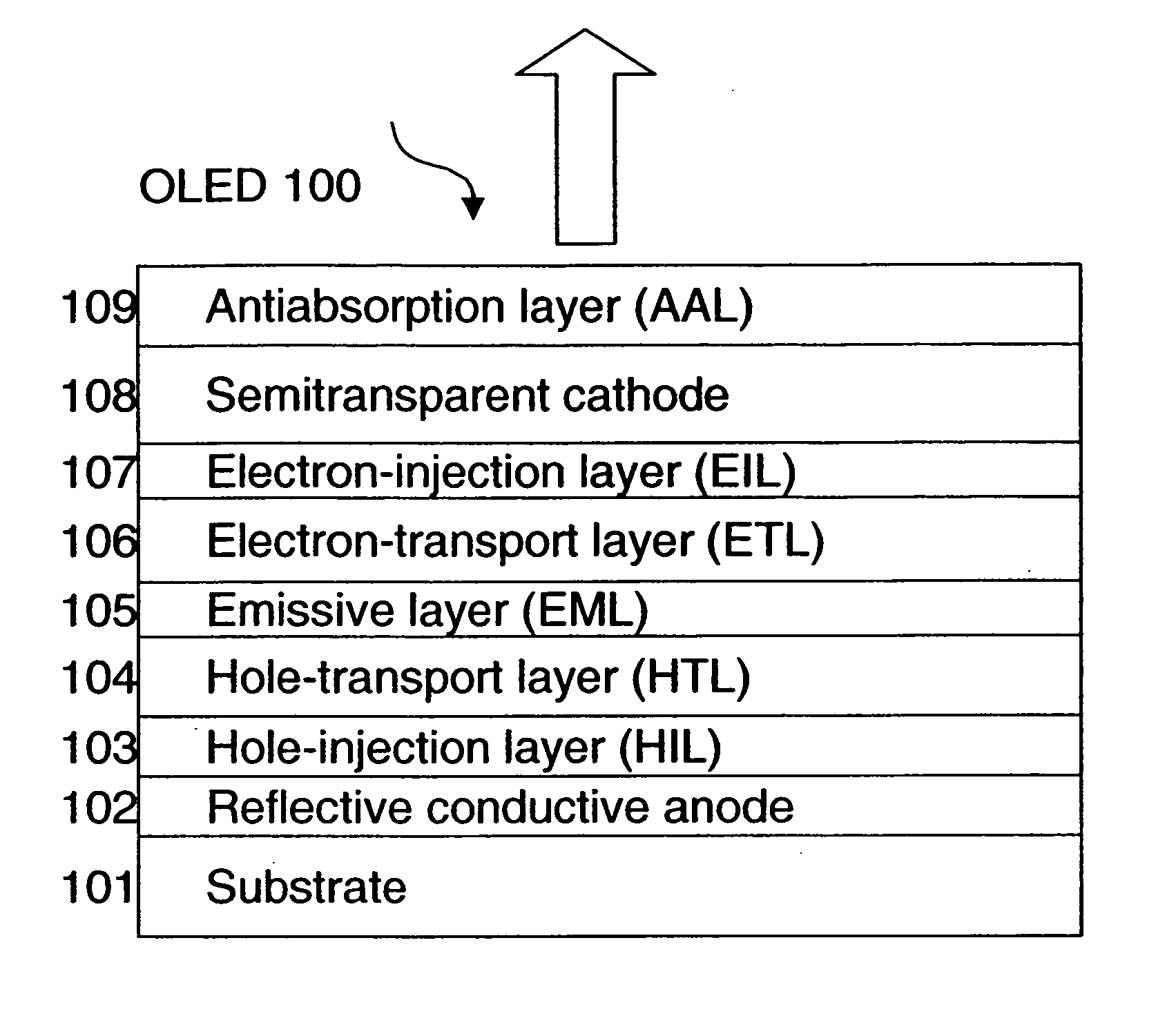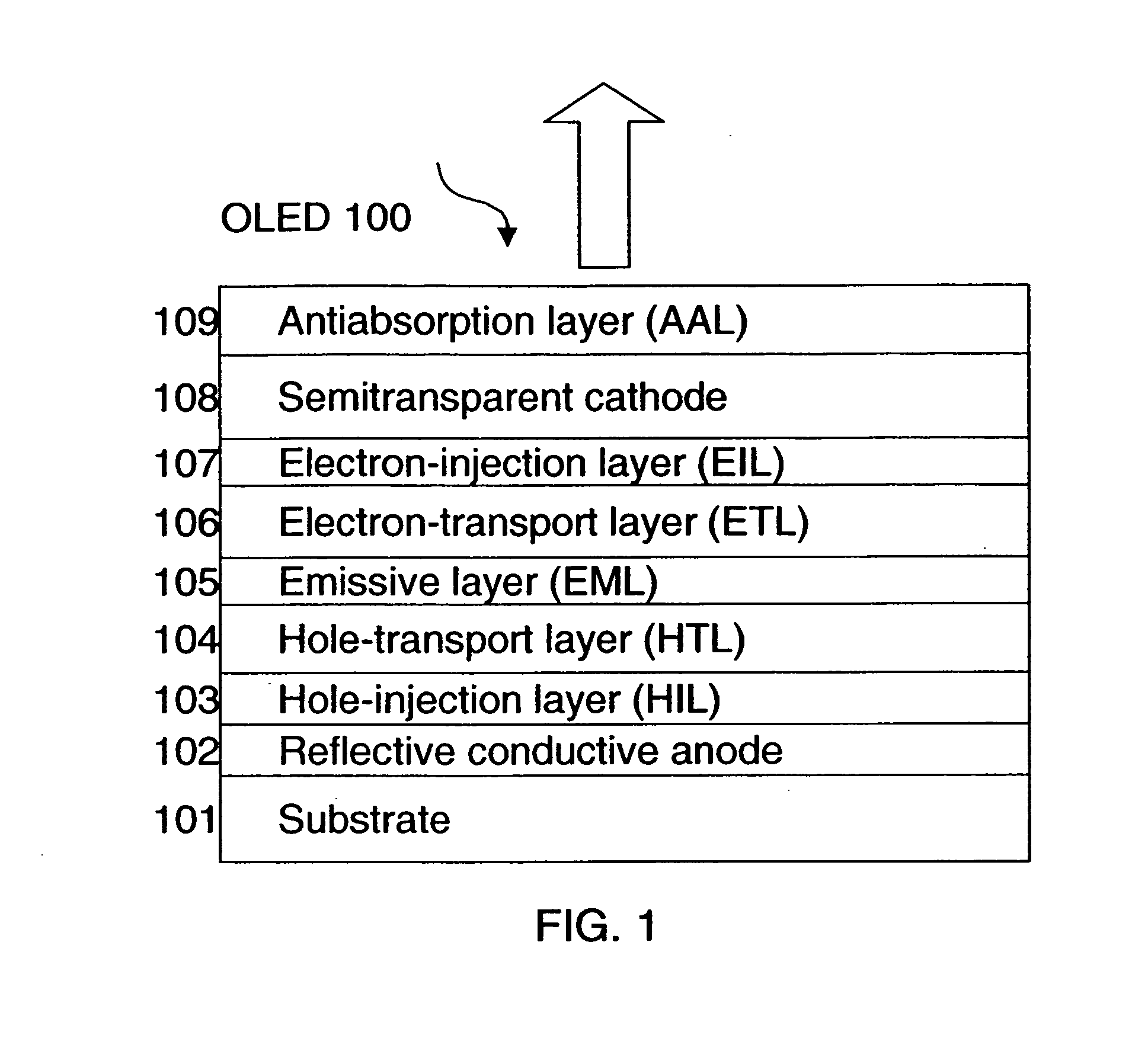Top-emitting OLED device with improved stability
a technology of organic light and diodes, which is applied in the direction of organic semiconductor devices, discharge tubes/lamp details, discharge tubes luminescnet screens, etc., can solve the problems of large amount of generated light trapped within the device, large display area on the substrate is not available for light to emerge, and small fraction of generated light is available for viewing, etc., to achieve improved long-term operational stability, increase lateral electrical conductivity, and high yield
- Summary
- Abstract
- Description
- Claims
- Application Information
AI Technical Summary
Benefits of technology
Problems solved by technology
Method used
Image
Examples
Embodiment Construction
[0024] Throughout the ensuing description acronyms are used to designate the names of the different organic layers and operating features of organic light-emitting devices. For reference they are listed in Table 1.
TABLE 1OLEDOrganic light-emitting diodeITOIndium tin oxideIZOIndium zinc oxideHILHole- injection LayerHTLHole-transport layerEMLEmissive layerETLElectron-transport layerEILElectron injection layerAALAnti-absorption layerARLAbsorption reduction layerNPB4,4′-Bis[N-(1-naphthyl)-N-phenylamino]biphenyl (NPB)AlqTris(8-hydroxyquinoline) aluminumTCOTransparent conductive oxide
[0025] Turning to FIG. 1, the OLED 100 is a top-emitting OLED device of the present invention, which includes a reflective and conductive anode 102, a hole-injection layer (HIL) 103, a hole-transport layer (HTL) 104, an emissive layer (EML) 105, an electron-transport layer (ETL) 106, an electron-injection layer (EIL) 107, a semitransparent cathode 108, and an anti-absorption layer (AAL) 109 successively dis...
PUM
| Property | Measurement | Unit |
|---|---|---|
| work function | aaaaa | aaaaa |
| thickness | aaaaa | aaaaa |
| thickness | aaaaa | aaaaa |
Abstract
Description
Claims
Application Information
 Login to View More
Login to View More - R&D
- Intellectual Property
- Life Sciences
- Materials
- Tech Scout
- Unparalleled Data Quality
- Higher Quality Content
- 60% Fewer Hallucinations
Browse by: Latest US Patents, China's latest patents, Technical Efficacy Thesaurus, Application Domain, Technology Topic, Popular Technical Reports.
© 2025 PatSnap. All rights reserved.Legal|Privacy policy|Modern Slavery Act Transparency Statement|Sitemap|About US| Contact US: help@patsnap.com



